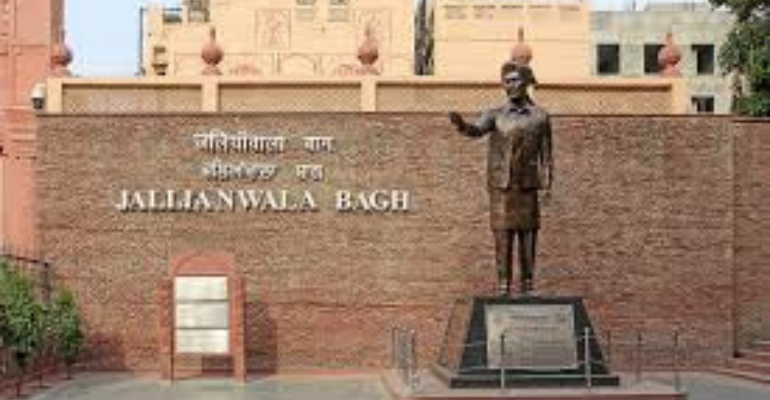
Excellent
800 Review
Daily Tour
4 Days
30 People
Any Language
The Jallianwala Bagh massacre, also known as the Amritsar massacre, took place on 13 April 1919. A large, peaceful crowd had gathered at the Jallianwala Bagh in Amritsar, Punjab, British India, during the annual Baishakhi fair to protest against the Rowlatt Act and the arrest of pro-independence activists Saifuddin Kitchlew and Satyapal. In response to the public gathering, the temporary brigadier general R. E. H. Dyer surrounded the people with his Gurkha and Sikh infantry regiments of the British Indian Army. The Jallianwala Bagh could only be exited on one side, as its other three sides were enclosed by buildings. After blocking the exit with his troops, Dyer ordered them to shoot at the crowd, continuing to fire even as the protestors tried to flee. The troops kept on firing until their ammunition was exhausted. Estimates of those killed vary from 379 to 1,500 or more people; over 1,200 others were injured, of whom 192 sustained serious injuries. Britain has never formally apologised for the massacre but expressed "deep regret" in 2019.The massacre caused a re-evaluation by the Imperial British military of its role when confronted with civilians to use "minimal force whenever possible" (although the British Army was not directly involved in the massacre; the British Indian Army was a separate organisation). However, in the light of later British military actions during the Mau Mau rebellion in the Kenya Colony, historian Huw Bennett has pointed out that this new policy was not always followed. The army was retrained with less violent tactics for crowd control.The level of casual brutality and the lack of any accountability stunned the entire nation, resulting in a wrenching loss of faith of the general Indian public in the intentions of the United Kingdom.[15 The attack was condemned by the Secretary of State for War, Winston Churchill, as "unutterably monstrous", and in the UK House of Commons debate on 8 July 1920 Members of Parliament voted 247 to 37 against Dyer. The ineffective inquiry, together with the initial accolades for Dyer, fuelled great widespread anger against the British among the Indian populace, leading to the non-cooperation movement of 1920–22. Some historians consider the episode a decisive step towards the end of British rule in India.During World War I, British India contributed to the British war effort by providing men and resources. Millions of Indian soldiers and labourers served in Europe, Africa, and the Middle East, while both the Indian administration and the princes sent large supplies of food, money, and ammunition. Bengal and Punjab remained sources of anti-colonial activities. Revolutionary attacks in Bengal, associated increasingly with disturbances in Punjab, were enough to nearly paralyse the regional administration. Of these, a pan-Indian mutiny in the British Indian Army planned for February 1915 was the most prominent amongst a number of plots formulated between 1914 and 1917 by Indian nationalists in India, the United States and Germany. The planned February mutiny was ultimately thwarted when British intelligence infiltrated the Ghadar Movement, arresting key figures. Mutinies in smaller units and garrisons within India were also crushed. In the context of the British war effort and the threat from the separatist movement in India, the Defence of India Act 1915 was passed, limiting civil and political liberties. Michael O'Dwyer, then the Lieutenant Governor of Punjab, was one of the strongest proponents of the act, in no small part due to the Ghadarite threat in the province.
The distance of Haridwar to Jallianwala Bagh 449 km.it takes approx 8 hr 6 min Haridwar to Jallianwala Bagh.it is safe tour ladies and tourists.
lodging based on sharing a twin.Breakfast is the meal.Every sightseeing and transfer according to the schedule.
Personal costs include phone calls, mineral water, soft and strong beverages, porterage, tips, and gratuities.Admission and guidance fees Anything that is not listed among the included materials.